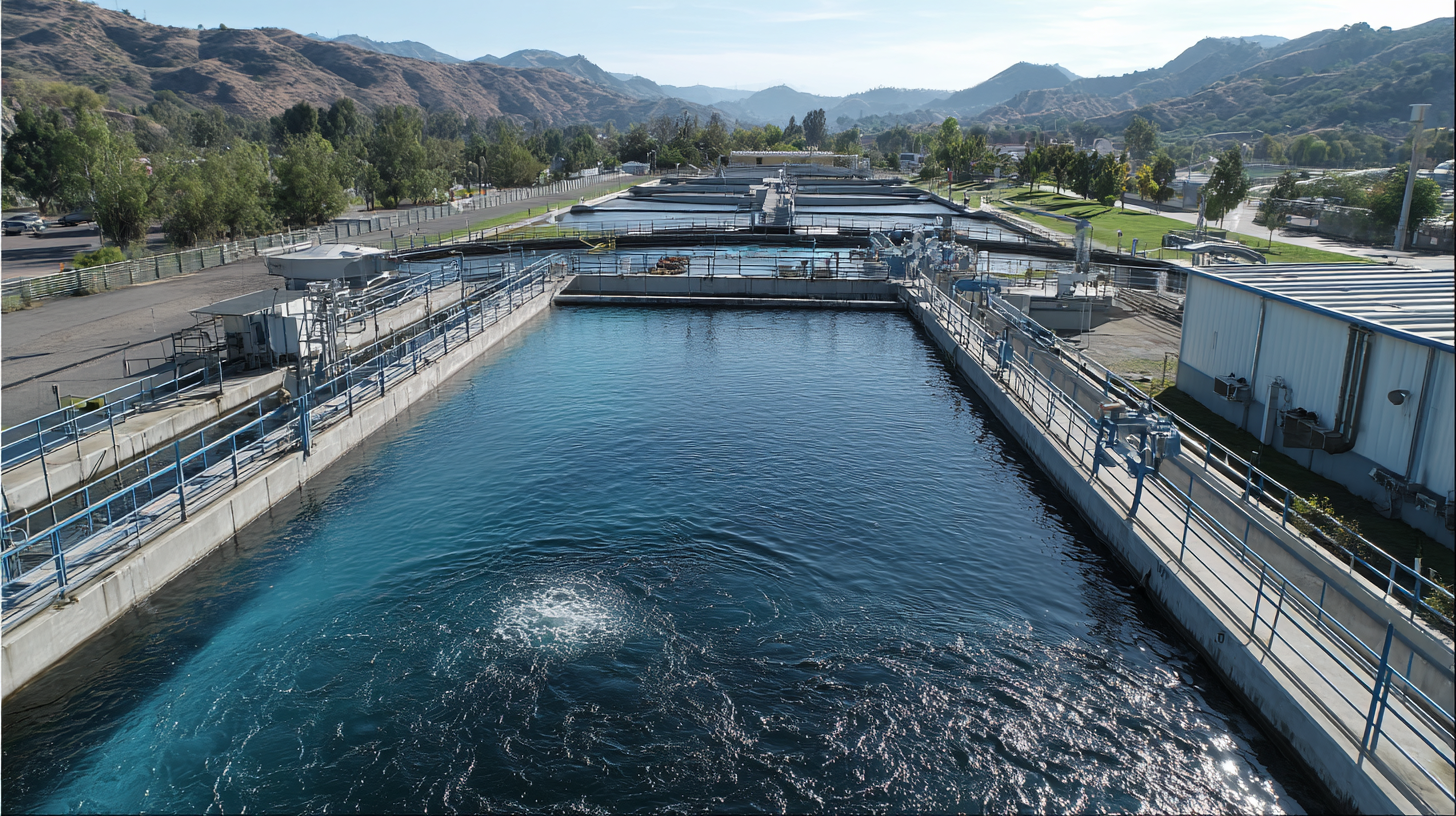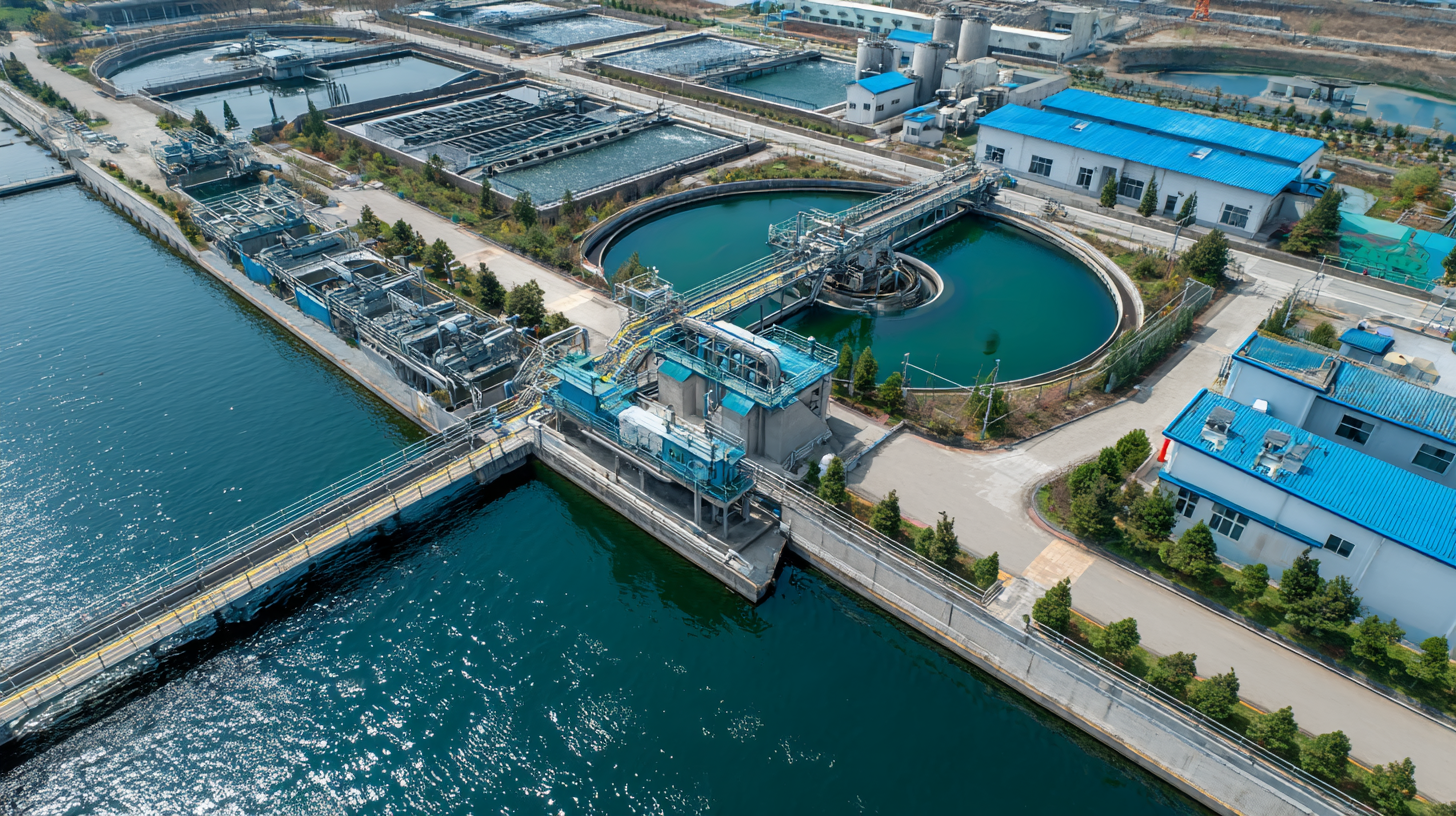Understanding the Wastewater Treatment Process: 90% of Water Can Be Recycled with Effective Methods
In the quest for sustainable water management, understanding the wastewater treatment process has become increasingly vital. According to a report by the World Health Organization (WHO), as much as 80% of the global wastewater generated is released back into the environment without adequate treatment, leading to severe environmental and health issues. However, advanced treatment technologies can allow up to 90% of wastewater to be recycled, thus significantly contributing to water conservation efforts. This presents not only a challenge but also an opportunity for industries to adopt more effective waste management practices.
Dr. Jane Smith, a leading expert in environmental engineering, emphasizes the importance of improving wastewater treatment facilities by stating, "The wastewater treatment process is not just about eliminating waste; it’s about creating value from what has been discarded." By employing innovative methods such as membrane bioreactors and advanced oxidation processes, we can transform wastewater into a resource, enabling industries to utilize recycled water in various applications, from irrigation to industrial processes.
As we delve into the intricacies of the wastewater treatment process in this guide, we will explore effective methods that can facilitate the recycling of water, enhance resource recovery, and promote a circular economy. It is crucial for industries and communities alike to understand these processes and implement best practices to ensure a sustainable future.

The Importance of Wastewater Treatment in Sustainable Water Management
Wastewater treatment plays a crucial role in sustainable water management by transforming polluted water into a reusable resource. With growing concerns over water scarcity, effective treatment processes can significantly enhance the availability of clean water. By employing advanced technologies, such as biological treatment and membrane filtration, up to 90% of wastewater can be recycled. This not only ensures a reliable water supply but also mitigates the environmental impact of wastewater discharge into natural ecosystems.
Additionally, the importance of wastewater treatment extends beyond water recovery. It contributes to the circular economy by facilitating nutrient recovery, thus creating opportunities for agricultural applications. This method not only supports food production but also reduces the need for chemical fertilizers, addressing both water and soil health. As populations continue to grow and urbanize, prioritizing efficient wastewater treatment is essential for sustainable development, ensuring that future generations have access to clean and safe water resources.
Understanding the Wastewater Treatment Process: 90% of Water Can Be Recycled with Effective Methods - The Importance of Wastewater Treatment in Sustainable Water Management
| Process Stage | Description | Estimated Efficiency (%) | Common Technologies |
|---|---|---|---|
| Preliminary Treatment | Removes large debris and solids. | 80 | Screens, Grit Chambers |
| Primary Treatment | Settling of suspended solids. | 50 | Sedimentation Tanks |
| Secondary Treatment | Biological processes to degrade organic matter. | 90 | Activated Sludge, Bioreactors |
| Tertiary Treatment | Polishing steps for nutrient removal and disinfection. | 95 | Filtration, UV Disinfection |
| Water Reuse | Recycling treated wastewater for various uses. | 90 | Membrane Filtration, Reverse Osmosis |
Key Technologies Driving Effective Wastewater Treatment Processes
The treatment of wastewater is increasingly vital as the demand for water conservation rises in light of ecological challenges. Key technologies driving effective wastewater treatment processes include advanced membrane technologies, which play a significant role in transforming China's water ecology industry. The ongoing "green revolution" driven by such innovations emphasizes the importance of sustainable practices in wastewater management.

Recent advancements in photocatalytic oxidation processes have further enhanced the efficiency of wastewater treatment, demonstrating significant potential for future applications. Additionally, market growth in sectors including fermentation tanks and water analysis instruments indicates a strong trend towards a more intelligent and resource-efficient approach in handling wastewater. As industries evolve, the integration of smart, eco-friendly technologies not only addresses wastewater challenges but also contributes to broader environmental goals, fostering a culture of conservation and sustainability.
Recycling Water: Methods That Achieve Up to 90% Recovery Rates
Recycling water is an essential aspect of sustainable development, particularly in regions facing water scarcity. Various methods have been developed to achieve impressive recovery rates of up to 90%. Techniques such as membrane filtration, biological treatment, and advanced oxidation can effectively purify wastewater, making it suitable for reuse in agriculture, industry, and even drinking water supplies. By adopting these methods, communities can significantly reduce their reliance on freshwater sources and protect the environment.
Tips: Consider implementing gray water systems in residential areas to collect and recycle water from sinks, showers, and laundry. This can drastically lower household water usage while still maintaining hygiene. For industrial applications, investing in closed-loop systems can ensure that water is recycled effectively, reducing overall wastewater generation and improving sustainability.
Moreover, public education plays a crucial role in encouraging water recycling initiatives. By informing citizens about the benefits of water recovery and how to participate in local recycling programs, communities can boost involvement and enhance recovery rates. Strategies like rainwater harvesting can also complement wastewater treatment efforts, contributing to self-sufficiency in water resources.
The Role of Biological Treatment Systems in Wastewater Optimization
Biological treatment systems play a crucial role in optimizing the wastewater treatment process, significantly enhancing the efficiency of nitrogen removal. Recent studies have highlighted the effectiveness of biological aerated filters, particularly in treating wastewater with low nitrogen concentrations. The integration of real-time ATP monitoring allows for a deeper understanding of microbial activity, thereby improving the prediction of effluent quality. This not only streamlines the treatment process but also ensures a more reliable output, addressing the need for advanced techniques in wastewater management.
Further advancements include the optimization of ultrasound-electrocatalytic processes, which have shown promise in enhancing the quality of biological treatment effluents. These innovative methods contribute to reducing greenhouse gas emissions associated with wastewater treatment, allowing plants to operate more sustainably. Understanding the mechanisms involved in the process, such as dissolved oxygen transfer in aeration, also aids in the development of effective control strategies. By embracing these biological treatment methodologies, wastewater treatment facilities can significantly increase water recycling rates, showcasing their potential to recycle up to 90% of treated water.
Understanding Regulatory Standards for Effective Wastewater Reuse
The regulatory standards governing wastewater reuse are crucial in maximizing water recovery and ensuring public safety. The European Union is making significant strides with its revised Urban Wastewater Treatment Directive, aimed at achieving its 'Zero Pollution' ambition. This directive is expected to enhance the management of wastewater systems, promoting the reuse of treated water in agricultural and industrial sectors. In fact, effective wastewater management can allow for the recycling of up to 90% of treated water, offering a sustainable solution to water scarcity issues faced by urban populations.

Furthermore, as the world confronts increasing water crises, such as India's, the necessity for strict regulatory frameworks cannot be overstated. Effective management practices not only mitigate environmental risks but also align with the goal of water reuse sustainability. For instance, each resident in Florida generates around 100 gallons of wastewater daily, demanding robust treatment protocols. The EPA's anticipated revisions to regulations concerning wastewater discharges for oil and gas extraction reflect a growing recognition of the need for stringent standards to safeguard water quality. By integrating these regulations, regions can improve their resilience against water scarcity and climate impacts, ultimately leading to a more sustainable future.
Related Posts
-

How Wastewater Treatment Systems Are Revolutionizing Environmental Sustainability
-

How to Choose the Right Wastewater Package Plant for Your Needs
-

Exploring Innovations in Package Wastewater Treatment Plants at the 138th Canton Fair 2025
-

Transforming Industrial Waste Water Treatment Solutions at the 138th Canton Fair 2025 for a Sustainable Future
-

What is the Role of Waste Water Treatment Plants in Sustainable Water Management?
-

Revolutionizing Our Future: The Innovative Advances in Wastewater Treatment Systems


